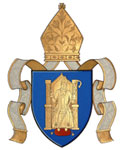 |
 |
News
New book charts history of Royal School and farm estate
A new book, “Enniskillen Royal School and its Tenant Farmers in the Nineteenth Century; Worlds Apart” detailing the origins of the School and the estate of land that was granted under the terms of the Plantation of Ulster in 1608 has been written by Mr Sam Morrow. Sam is a past pupil of Portora Royal School and was a member of the Board of Governors of Portora and its successor, Enniskillen Royal Grammar School.
In the book, Sam traces the fortunes and challenges faced by the early Royal School and of the farmer tenants on the school estate during the 19th Century.
That estate of land was granted in 1608 to support at least one free school for County Fermanagh.
This school dating from the early 17thn Century, was initially located in Lisnaskea, then at Schoolhouse Lane, Enniskillen, and from 1777 on Portora Hill.
The income from the estate, stretching from Lough Erne to Cuilcagh Mountain, supported the building and upkeep of the school until 1885 when the income from the estate and assets were divided equally between the Protestant and Roman Catholic Education Boards in County Fermanagh.
The estate was managed by the headmasters of the school until the 1820s when this responsibility was transferred to the Commissioners of Education.
Sam discovered how Enniskillen Royal School prospered during most of the nineteenth century but the same could not be said for the small tenant farmers on the school estate.

Author Sam Morrow.
“Enniskillen Royal School was regarded as the most richly endowed of all the Royal Schools. Much has been written about the success of the school in the nineteenth century but much less about the source of its endowments.
“The school and its estate can trace their origins back to the Plantation of Ulster. The plan was that an estate of land would be set aside the income from which would support at least one Free School for County Fermanagh. A school was established which, in time, developed with a particular emphasis on boarding. The school was described in a Commission of Education report in 1864 as being one of the most successful educational establishments in Ireland.
“Scholarships, funded from the rents paid by the tenant farmers on the estate, attracted pupils from all over Ireland. The emphasis on boarding did not meet with the approval of the local community, who felt that the school was intended for the local population since it was funded by the tenantry on the school estate. The management of the school estate also came in for local criticism due to the poor supervision exercised by its landlord which for the greater part of the century was the Dublin based Commissioners of Education. The Commissioners were subsequently described by an inspector as being the worst kind of absentee landlords.”
The Free Schools became Royal Schools by Royal Charter and Enniskillen Free School became known as Enniskillen Royal School from 1660 and, popularly, as Portora Royal School from the mid nineteenth century.
Sam’s book traces the fortunes of the school and the struggles of the tenantry during some particularly difficult times in the nineteenth century.
The School estate extended to some 5,570 acres from Lough Erne to Cuilcagh Mountain and most of this land was of poor agricultural quality, creating challenges for tenant farmers.
The book examines the causes and implications of many of the problems facing tenant farmers which became even worse during the years of the Great Famine in the 1840’s leading to arrears in rent payments and some evictions.
The book also describes the role of some of the early headmasters of the Royal School. Initially they were responsible for the running of the school and management of the estate and the book describes the friction created between some headmasters and the authorities over the school offering places to boarders as well as local children.
Sam takes the reader through the development of the school and its estate which was largely re-distributed to tenant farmers through government acts, right up to the present day where Enniskillen Royal Grammar School now provides the education for boys and girls.
There are interesting accounts from farmers currently owning farms which were part of the school estate, many of them not knowing the history of their holdings as tenancies in the 19th Century.
A new school build on the Portora Hill site is expected to begin in the next few years.
The book will be available from Enniskillen Royal Grammar School following the launch on Tuesday, 3 December 2024.